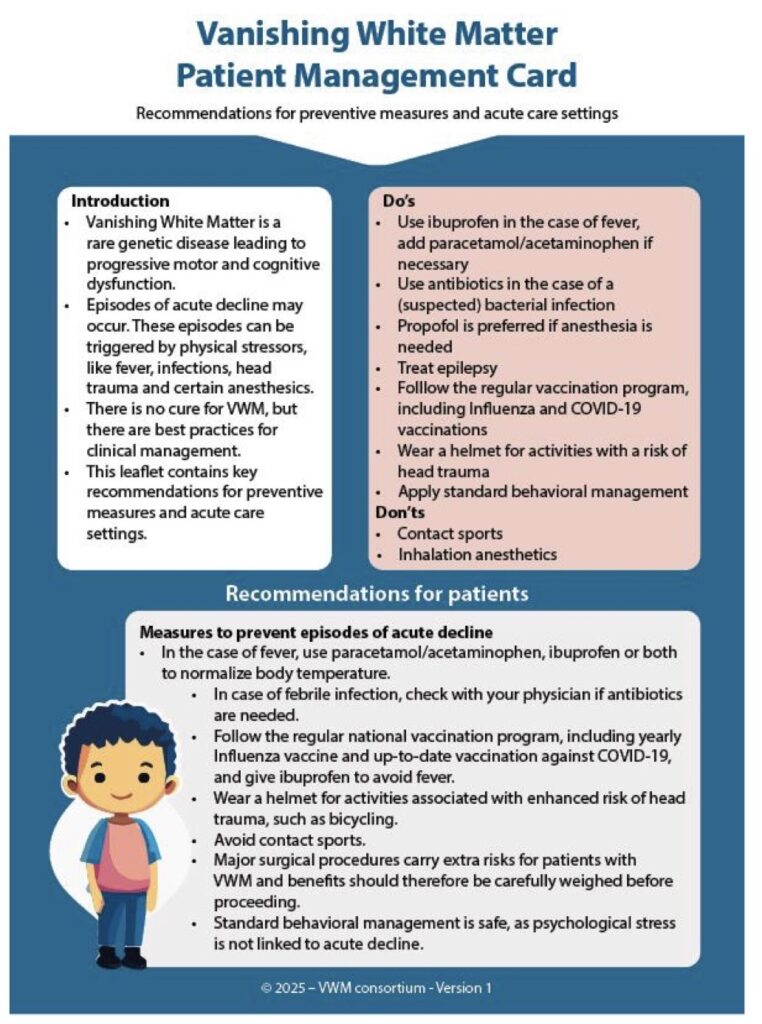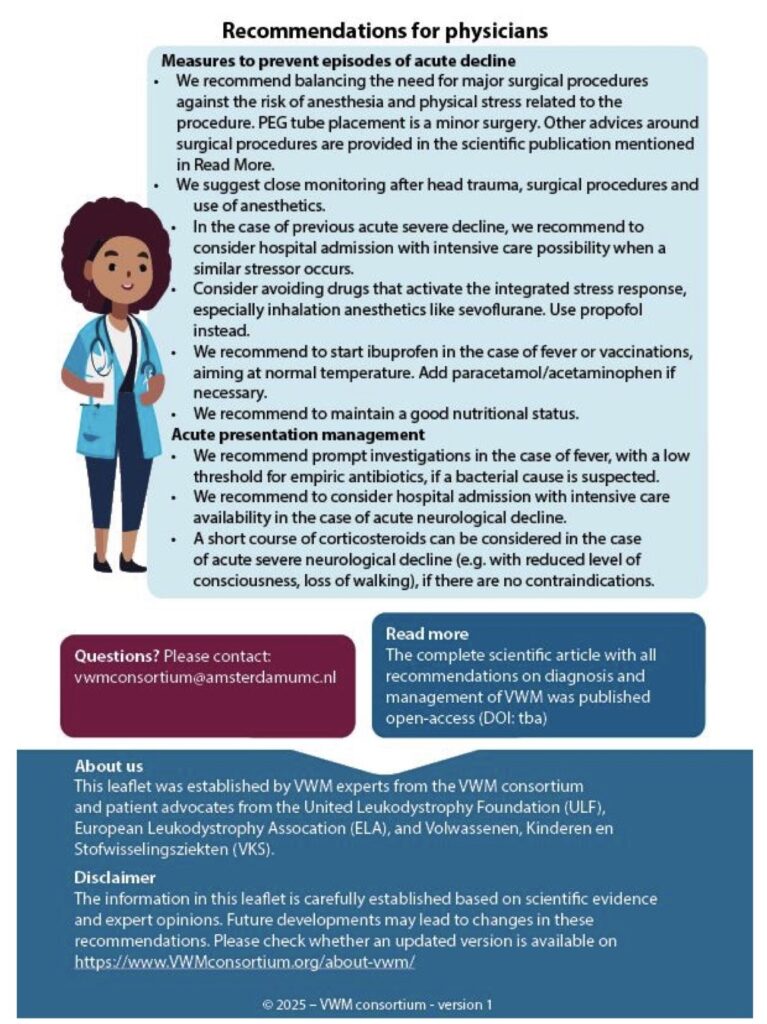New Global Guidelines Issued for Vanishing White Matter (VWM) — A Significant Step Forward for Families and Care Teams
We’re pleased to share a major advancement in the care of VWM. A new international consensus document has just been published, offering evidence- and expert-based recommendations for the diagnosis and clinical management of VWM. This is a milestone for the VWM community and will help standardize care worldwide.
What’s in the Paper
- The guidance was developed by a multidisciplinary panel of experts using a real-time Delphi process to ensure broad agreement. PubMed+1
- It includes 43 recommendations spanning:
- Genetic testing of the EIF2B1–5 genes
- MRI criteria for diagnosis and disease monitoring
- Clinical management of acute episodes and long-term care strategies
- Preventive strategies (including which drugs may activate or suppress the integrated stress response)
- A “patient management card” was developed in lay-language to help families and clinicians use the recommendations in practice.
Why It Matters
- Prior to this, there was no widely-accepted set of global guidelines for VWM, leading to variation in diagnosis and care across centers and countries.
- Standardizing care is critically important, especially now that experimental therapies are being studied; consistent care means more reliable clinical trial outcomes.
- The paper acknowledges the role of stressors (e.g., fever, minor head injury) in disease exacerbation and provides recommendations around prevention and management.
What This Means for Families
- If you or your loved one has VWM, you can now ask your care team if they are familiar with these new recommendations.
- These guidelines can help your clinician with decisions around diagnosis, monitoring, emergency planning, and long-term care.
- The patient-friendly management card offers a tool you can keep and refer to when talking with healthcare providers.
- Sharing this resource within your community can help empower others and strengthen global advocacy efforts.
Next Steps & How You Can Help
- Download and review the full paper (link provided below) and share with your clinical team.
- Consider requesting a copy of the patient management card from your specialist or VWM referral center.
- Stay engaged: as therapies and research evolve, these guidelines will likely be updated.
- Support advocacy efforts: raising awareness about standardized care helps improve outcomes for all affected individuals globally.
Read the full article here: Neurology Journal – van Voorst R.J. et al., 2025
*The United Leukodystrophy Foundation is not liable for any inaccuracies or gaps in these overviews , which are offered “as is” without assurances on completeness, accuracy, or timeliness. For verification or detailed information, please consult the original articles directly.
As a leukodystrophy related nonprofit, the ULF provides awareness to scientific literature. Inclusion on our website does not imply endorsement of, or agreement with, the contents by the ULF.


